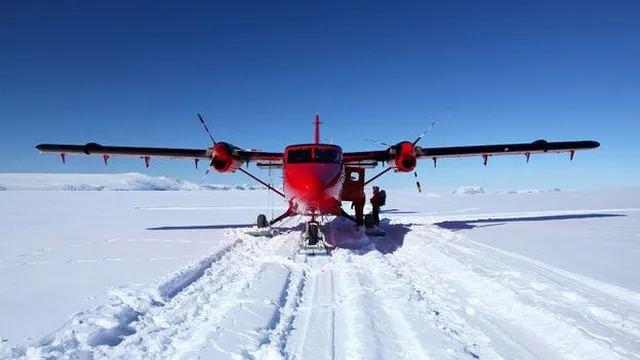
60-year-old plane completes 12-day journey to Antarctica
2024-09-13 09:05- The British Antarctic Survey conducts annual ferry flights from Canada to Antarctica using a de Havilland Twin Otter aircraft.
- The flight presents numerous challenges, including navigating through harsh weather conditions and managing limited facilities.
- Pilots find the experience both challenging and rewarding, highlighting the unique nature of flying in such extreme environments.
Express your sentiment!
Insights
The British Antarctic Survey (BAS) undertakes annual ferry flights from Canada to Antarctica, utilizing a 60-year-old de Havilland Twin Otter aircraft. This aircraft, designed in the 1960s, is known for its reliability and is still in production today. The ferry flight presents unique challenges, including navigating through various weather conditions, such as icy runways and potential hurricanes. The cockpit is cramped, equipped with a mix of old and new technology, and lacks proper toilet facilities, adding to the difficulties faced by the crew. The ferry flight is essential as maintaining aircraft in Antarctica during winter is impractical due to limited facilities at BAS's Rothera research station. The aircraft operates at a maximum speed of 150 knots and an altitude of 10,000 feet, which requires careful planning and constant monitoring of conditions. The pilots, including deputy chief pilot Auld, have extensive experience, with Auld having flown these routes for over a decade. Despite the apprehension felt during initial flights, the pilots find the experience exhilarating. They must remain vigilant for emergencies, as there are limited options once committed to the journey. The flight involves carrying significant fuel loads, which adds to the risk, especially in the event of an engine failure. Upon arrival in Antarctica, the crew faces additional challenges, making the entire journey a test of skill and resilience. The combination of old aircraft technology and the demanding environment of Antarctica makes these ferry flights some of the most challenging and rewarding experiences for the pilots involved.
Contexts
NASA scientists are currently engaged in a project to create autonomous underwater robots aimed at investigating the melting ice beneath Antarctica's ice shelves. This initiative is crucial as it seeks to gather data on the rate of ice melt and its implications for global sea levels. The robots will operate independently, monitoring the effects of warmer ocean water on the ice, which is essential for understanding future sea level rise projections. The completion of a 60-year-old plane's 12-day journey to Antarctica highlights the ongoing interest in the region, particularly in light of the significant environmental changes occurring there. The melting ice in Antarctica is a pressing concern, as it contributes to rising sea levels that can have widespread impacts globally. The combination of historical exploration efforts, such as the journey of the vintage plane, and modern scientific endeavors, like the deployment of NASA's autonomous robots, underscores the importance of continued research and monitoring in Antarctica. This dual approach aims to enhance our understanding of the region's changing climate and its broader implications for the planet. As scientists work to track and analyze the effects of climate change in Antarctica, the data collected will be vital for informing policy and response strategies to mitigate the impacts of rising sea levels.